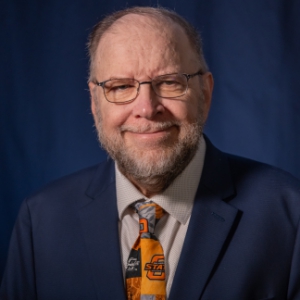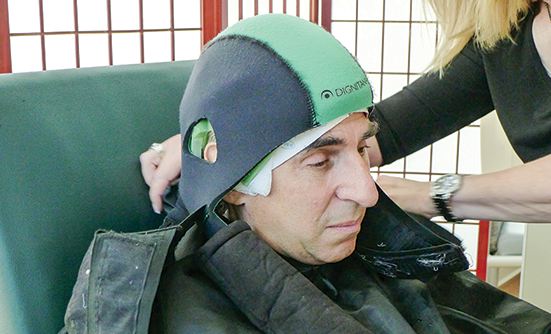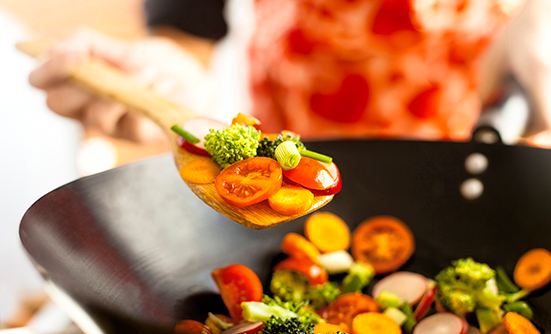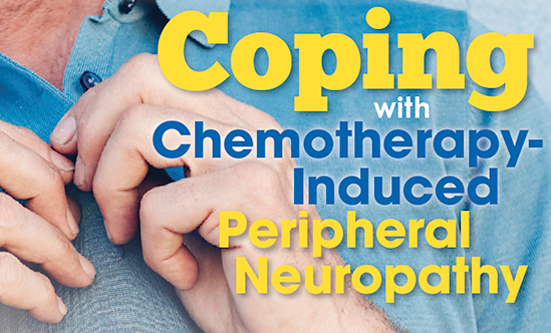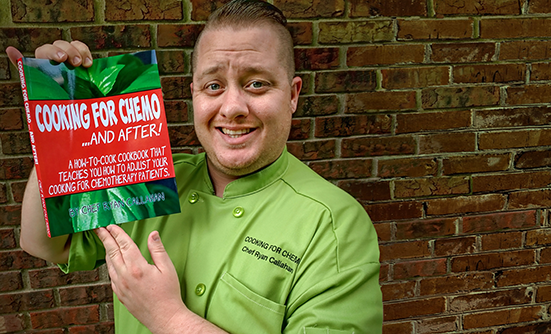
Perhaps Paracelsus was an intrinsic pessimist. We can also assert the converse: Every poison has the potential to be an effective drug. These maxims are most evident in the world of cancer chemotherapy.
When informed by my oncologist that cisplatin would be the core of my chemotherapy regimen, I recounted reluctantly that my mother had been administered the very same drug a generation ago. “Isn’t that an old drug?” I inquired with puzzlement. “Indeed,” he hastened in reply, “but it works!”
I recounted that my mother had been administered the same drug a generation ago. “Isn't that an old drug?” I inquired with puzzlement. “Indeed,” he replied, “but it works!”
If you have been given chemotherapy for a cancer, or known someone who has, it is likely you have encountered mention of cis-platinum, more commonly known as cisplatin. Your opinion of this chemical may also be ambivalent since it has gained a well-earned reputation for being both a boon to cancer therapeutics as well as a bane for inducing severe side effects. I surely shared those “negative vibes” concerning cisplatin when first diagnosed with a head and neck squamous cell cancer. Fortunately, I soon learned that oncologists of this generation are employing a battery of means to diminish the side effects and maximize the efficacy of this long-standing compound. As my therapy progressed and my subjective anxieties about chemotherapy with this unique drug diminished, I developed an objective curiosity about cisplatin, its history, and utility.
Michele Peyrone, an Italian chemist, is credited with first synthesizing cisplatin all the way back in 1845 as an accidental by-product of another chemical reaction he was performing. The formula for cisplatin wasn’t determined for another half century. Its official chemical name became the imposing cis-diamminedichloroplatinum (CDDP, cis-platinum or cisplatin—the name currently preferred by oncologists).1
An Antibacterial Drug?
Much of the 20th century passed while this compound, which forms lemon-yellow crystals, sat on the shelf as a chemical curiosity. Cisplatin’s dormancy ended in 1965 when biophysicist Barnett Rosenberg of Michigan State University used electrical currents to stimulate the growth of common E coli bacteria cultured in his lab. He was astonished to find that the bacteria were inhibited from growth. But the electricity wasn’t the culprit. More detailed analysis revealed that the platinum electrodes used in the experiment reacted to yield a platinum compound that was responsible for suppressing bacterial growth.2,3 That platinum compound turned out to be cisplatin.
The Spearhead of Chemotherapy
In 1974, oncologist Larry Einhorn of Indiana University, prompted by Rosenberg’s results, boldly proposed using cisplatin against an aggressive stage IV case of testicular cancer in one of his patients.2,4 The results were so promising that the era of platinum drug chemotherapy was marked to that time. By 1978, the FDA approved cisplatin for certain cancer chemotherapy applications. Additional targets for cisplatin therapy, alone or in combination with other drugs, soon included lymphomas, leukemias, as well as cancers of the bladder, breast, ovaries, head and neck, and cervix. These are classified as “platinum-sensitive cancers.”
Toxicity Woes
In retrospect, the rough edges of chemotherapy had yet to be addressed. Antinausea remedies were not yet efficient enough to stop the ubiquitous nausea and vomiting of people taking chemotherapy. A jaded reputation for cancer chemotherapeutics was rapidly acquired. To some, cisplatin was the “penicillin of cancer,” but clinicians feared overhyping any therapeutic drug. The world of medicine is so much more complicated. Cisplatin is not a new penicillin. Penicillin and other antibiotics work because they target a biological property unique to bacteria, thereby skipping over the human cells that host the disease-causing microbes. Cancer cells, on the other hand, are the deranged alter egos of human cells. Molecular biologist and Nobel laureate Harold Varmus defined the cancer cell to be “a distorted version of our normal selves.”2 This presents an enormous challenge for the application of any drug cocktail, which often cannot distinguish the deranged cells from the normal ones. That’s what chemotherapeutic toxicity is all about.
Cisplatin is effective against many malignancies because it specifically inhibits or kills cells that are actively dividing while exposing their DNA. Of course, the process of “actively dividing” is at the very heart of cancer cell metabolism. Unfortunately, it also is characteristic of many normal human cells. For example, cells in the digestive tract, hair follicles, and bone marrow (a source of new blood cells) also are often actively dividing, thus leading to chemotherapeutic side effects such as nausea, hair loss, anemia, and kidney damage. In fact, oncologists particularly monitor any potential kidney toxicity to determine whether to continue the current cycle of chemotherapy.
Cisplatin is effective against many malignancies because it specifically kills cells that are actively dividing while exposing their dna.
The fear of nausea and vomiting overshadows most cancer chemotherapies. Even the expectation of nausea prior to treatment is a predictive factor in its manifestation.5 A new generation of antiemetics (antinausea drugs), given before or during therapy, has minimized the dreaded nausea and vomiting associated with cancer chemotherapies.6 During chemotherapy with cisplatin and other toxic anticancer drugs, the recipient is hydrated and diuretics are administered simultaneously so that these drugs are rapidly flushed from the body via the kidneys. (That of course leads to a parade of people marching to the clinics’ restrooms!)
Killing Mechanism
How does cisplatin interfere with cell division associated with cancer?
DNA exists as a double strand and constitutes the raw material of a gene. Four different nitrogenous bases (abbreviated as A, T, G, and C) bond with one another to stabilize those 2 DNA strands. These 2 DNA strands separate by the breaking of these bonds between the bases, an early step in cell division. Drugs like cisplatin bind to these bases, especially to the G base (guanine), thereby cross-linking the double strand of DNA, interfering with DNA double-strand separation and the consequent cell division.1
Cisplatin Resistance
Sometimes, cisplatin is not totally successful due to “resistance.” In some ways this is analogous to the resistance of bacteria to antibiotics. This characteristic of some cancer cells had puzzled oncologists for some time. Apparently, several mechanisms of resistance by cancer cells to cisplatin therapy are in play. These include the ability of cancer cells, like their normal counterparts, to pump drugs out of the cell, to enzymatically detoxify drugs, or to repair the drug-damaged DNA within them.7,8
Other Platinum-Based Drugs for Chemotherapy
As a potential remedy for resistance and/or toxicity, other platinum-based chemotherapeutic agents such as oxaliplatin and carboplatin were developed as alternate “first-generation” platinum drugs. Later platinum compounds like nedaplatin or lobaplatin were developed for further evaluation.1
The Future—Precision Medicine
The avant garde concept of “precision medicine”9,10 will guide future cancer therapeutics in the 21st century. The presence of molecular biomarkers, that may appear as unique upon individual cancers, may forecast which chemotherapies are most likely to be successful among individual people. Oncologists will minimize trial-and-error protocols by using biomarker profiles to tailor therapies for an individual person.
As a former patient and modest inquirer, may those new protocols enhance the lives of people whose lives have been affected by cancer.
References
- Yetman D. Understanding Platinum-Based Chemotherapy. Healthline. www.healthline.com/health/cancer/platinum-based-chemotherapy.
- Mukherjee S. The Emperor of all Maladies: A Biography of Cancer. Simon & Schuster; 2010.
- Rosenberg B, Vancamp L, Krigas T. Inhibition of cell division in Escherichia coli by electrolysis products from a platinum electrode. Nature. 1965;205:698-699.
- IU Medicine Magazine. Larry Einhorn: The Breakthrough, The Cure, The Vision, The Legacy, The Teacher. https://medicine.iu.edu/magazine/larry-einhorn. 2015.
- Roscoe JA, Bushunow P, Morrow GR, et al. Patient expectation is a strong predictor of severe nausea after chemotherapy: a University of Rochester Community Clinical Oncology Program study of patients with breast carcinoma. Cancer. 2004;101:2701-2708.
- Ryan JL. Treatment of chemotherapy-induced nausea in cancer patients. Eur Oncol. 2010;6:14-16.
- Galluzzi L, Senovilla L, Vitale I, et al. Molecular mechanisms of cisplatin resistance. Oncogene. 2012;31:1869-1883.
- Chen SH, Chang JY. New insights into mechanisms of cisplatin resistance: from tumor cell to microenvironment. Int J Mol Sci. 2019;20:4136.
- Precision Medicine online. https://link.precisionmedicineonline.com/.
- IDEAYA Biosciences. Transformative Precision Medicines. www.ideayabio.com/.
About the Author
Garry M. Marley, PhD, serves as faculty in the Department of Microbiology & Molecular Genetics at Oklahoma State University. He holds a PhD in molecular biology and microbiology from the University of Maryland at Baltimore. Recently, he was successfully treated for throat cancer—in part with cisplatin—by the expert medical staff at the Stillwater (OK) Cancer Center.






